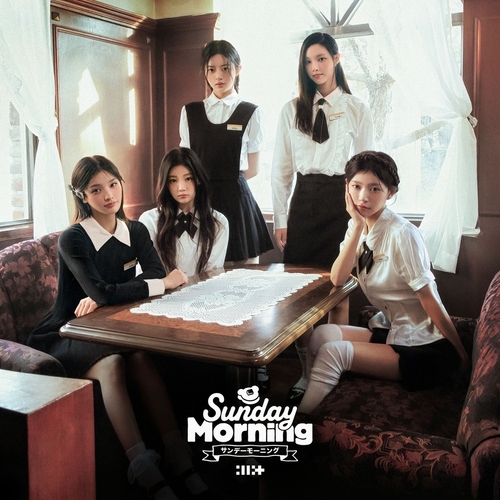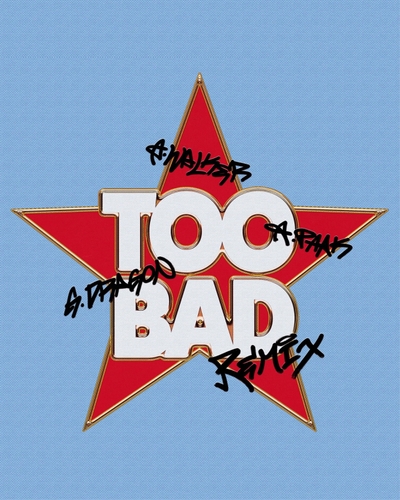NewJeans, ILLIT and the law: The future of dance copyrights in Korea

A new discussion opened up in the field of culture due to the ongoing conflict between girl group NewJeans’s producer Min Hee-jin and HYBE: the issue of choreography copyrights.
One of the reasons surrounding Min Hee-jin's claim that girl group ILLIT “copied” her girl group was due to dance choreography. Min said the moves were “obviously” similar to those of NewJeans. Similar opinions were spread by fans online, adding fuel to the fire of Min's conflict with HYBE.
Aside from whether or not ILLIT’s choreography is in fact similar or not , the accusation has resulted in the subject of dance choreography copyright rising to the national agenda for the first time in Korea. Discussions surrounding giving official credit — as well as profit — to choreographers have begun.
In a world where the K-pop market has grown astronomically, K-pop choreography can become a formidable product, especially with the ever-growing popularity of K-pop challenges on social media that use iconic moves from a song to promote artists and music.
Major dancers in Korea have come together to tackle the issue as a group through the Korean Choreography Copyright Association (translated), while the government is also looking to tackle the issue, promising to establish laws to properly protect the rights of choreographers and their work.
NewJeans versus ILLIT
“Everything is just copy and paste,” dancer Kim Eun-ju, known as girl group NewJeans’s performance director, said on May 13 on her Instagram, after ILLIT released its music video for the song “Lucky Girl Syndrome” on April 17.
Black. Q, also a choreographer for NewJeans, expressed he was upset about the choreography of ILLIT’s track.
The two dancers alleged that ILLIT copied the choreography from NewJeans’s McDonald's advertisement.

The dancers' allegations follow Min’s accusation, which first surfaced in April, stating that the choreography of ILLIT’s “My World” plagiarized NewJeans’s “Attention” (2022) and ILLIT's “Magnetic” copied NewJeans's “Ditto” (2022).
If such disputes go to court, however, it's difficult to determine copyright infringement based solely on the choreography's movements, as it is hard to prove that a certain movement is entirely new.
To determine an infringement, the court must first look into whether NewJeans made a unique dance movement that is different from general, basic dance moves. Then, the court has to observe and determine if ILLIT copied the unique dance moves on purpose. The result would be up to the judge’s own discretion, as there is currently no determined criteria for decisions.
Though there have been numerous accusations of plagiarism in choreography, no case has been sent to court. The reason is that filing a suit does not provide any practical benefit for the choreographers, as choreography copyrights do not yield much profit.
The story changes, however, if the choreography copyright becomes profitable.
No profit for copyrights
It is common for choreographers to receive payment only for their services in creating choreography and for them to accept clauses stating that the right to their creation belongs to the entertainment company.
As a result, choreographers such as Lee Ju-sun, who created the horse-riding dance for singer Psy’s “Gangnam Style” (2012), and No:ze, who created the viral dance to David Guetta’s “Hey Mama” (2015) in Mnet’s dance survival program “Street Woman Fighter” (2021), did not receive any profit from the copyrights of their choreography.

Choreographers are also neglected on social media platforms like TikTok, Instagram’s Reels and YouTube. Even though their choreography can go viral, the profits only go to the music copyright holders.
K-pop choreographers have started to raise their voices about choreography rights, as the status of K-pop choreography continues to rise globally.
The Korean Choreography Copyright Association was launched on April 24 led by 1Million Dance Studio, a renowned dance academy run by dancer Lia Kim as co-CEO. Lia Kim was named the first president of the association and other famous dancers, including Honey J, Bada, Vata and Choi Young-joon, also added their names to the association's list.
The goal is to design a profit distribution structure for choreography copyrights and to make them operational for K-pop dances.
Government involvement
The Ministry of Culture, Sports and Tourism also holds the protection of choreography copyright as one of its central projects.
Culture Minister Yu In-chon announced last December that it plans to advise music TV shows to state the choreographers’ names in broadcasts and is currently conducting research into a rewards system alongside the Korea Copyright Commission (KCC).
“We are conducting a market survey to systemize the registration of choreography copyrights and establish a structured rewards system for profit distribution,” an official from the Culture Ministry’s Copyright Policy Division said. “We are planning to recommend improvements in stating choreographers’ names and will implement a standardized contract form within this year.”
Such initiatives are garnering global attention, as Korea is the first country to push the profit distribution of choreography copyrights in the pop music scene.

In March, 1Million Dance Studio was invited to Geneva by the World Intellectual Property Organization to talk about the current status of Korean choreography and copyright.
Korea is pioneering these initiatives as a result of K-pop's skyrocketing popularity, which opened the era of watching music on online video platforms.
Though viral dance music existed, with the track “Macarena” (1993), in the 1990s, choreography was generally perceived as playing a supporting role to the music.
However, the perception shifted with Psy’s “Gangnam Style,” which changed the Billboard standards in 2013 to add YouTube views to its tally system.
The modification was made, as “Gangnam Style” kept sitting at No. 2 on the Billboard Hot 100 charts, which didn't reflect how well the song was going on YouTube with its views. Back then, Billboard only considered the number of radio broadcasts for its rankings system.
After the modification, K-pop groups, such as boy band BTS and girl group Blackpink, were able to put their names on the Billboard charts more often.
In other words, it is not hard to say that the choreographers were the key drivers of the K-pop syndrome around the world.
Still the underdog
While the influence of K-pop choreography has risen, nothing much has changed for the choreographers in terms of their status.
“Though dance survival shows like ‘Street Woman Fighter’ and ‘Street Man Fighter’ garnered major public attention, only the leaders of each dance crew gained popularity. The popularity of other dance crew members remained unchanged compared to before the show was aired,” Yoon Yeo-wook, co-CEO of 1Million Dance Studio, said. “I want to make a system rewarding one’s effort.”

However, making a rewards system is not an easy task.
Currently, many K-pop choreographies are the result of joint work from numerous choreographers. K-pop companies usually choose the parts they need and combine them from choreography drafts sent from different choreography teams.
As a result, tens of people may be involved in creating a piece of choreography, and their level of contribution may also differ.
The implementation of a standardized contract is also needed, as choreography teams are generally required to give up their copyrights when participating in a draft.
“We have to break the industry practice [of requiring such clauses],” Lia Kim said. “I was told that some companies keep dancers from disclosing their choreography participation, even on social media, meaning that the companies think of the dancers as an outsourcing service rather than as creators.”
“Choreographers tend not to go against the companies, as they have to continue their careers. It’s a common practice. That’s why an association is needed and a standardized contract is needed. Things have to change.”
Although a solid guideline for registering copyrights for choreography doesn't exist, current copyright law considers a choreography work to be a subclass of a theater work and does not separately categorize it.
In Korea, the number of registered copyrights related to choreography has been negligible, while the number of general copyright registrations surged to some 70,000 in 2023 from some 40,000 registrations in 2019, according to the KCC.
Only 191 choreography copyrights were registered over the past five years, representing just 0.061 percent of the total number of registered copyrights. Among them, no K-pop dances were registered.
Only dances for performances, like "Hangul B-boy," and traditional dances, such as janggeommu or “long sword dance,” were some of the few registered dances.
Better late than never
The timing may have been a little awkward, but this may be just the right timing.
A choreographer for girl group Secret’s “Shy Boy” (2011) filed a copyright infringement and compensation suit in 2011 against a dance academy for using the choreography to teach its students and in promotions without consent. The court partially sided with the choreographer in 2011, and awarded the choreographer compensation from the academy.

BTS's J-Hope was also accused of copyright infringement due to one of his performances in 2018.
On Dec. 1, BTS showed off a gugak, traditional Korean music, version of its track “IDOL” at the 2018 Melon Music Awards. At the beginning of its performance, member J-Hope performed samgomu, a type of traditional Korean dance involving beating traditional drums, called buk.
However, after the performance, what was known to be a traditional Korean dance was discovered to have been copyrighted as a creation of Ubong Lee Mae-bang (1927-2015), which caused disputes within the dance field. Later, samgomu was acknowledged by a court as a creative work.
A famous choreography copyright lawsuit case overseas was the dispute between U.S. game company Epic Games and choreographer Kyle Hanagami over an avatar in the popular video game Fortnite.
Hanagami sued the company in 2022, claiming that one of its emotes in Fortnite copied his dance moves. The U.S. court initially dismissed Hanagami’s lawsuit later that year, citing that a short series of "poses" could not be copyright protected.
However, the appellate court overturned the initial ruling, saying that the composing and arranging of the “short poses” constitutes a creative work that should be copyright protected. In February, the two parties reached an agreement, resolving the case.
As the choreography copyright discussion becomes more prevalent, it will not only lead to legal issues but also increased resistance within the entertainment industry.
Until now, it was possible for fans to believe that their favorite K-pop singers also participated in creating choreography because the company did not need to disclose who the choreographer was.
“The reason that choreographers were always less mentioned and hidden behind the scenes is not because they lack creativity, but is because their status within the market is low,” Professor Hong Seung-ki of Inha University’s Law School said.
“The first thing that needs to be resolved is broadcasters stating the choreographer’s name, but it’s not easy due to the entertainment industry's age-old hierarchy,” Park Jin-ik, co-CEO of intellectual property trading platform WITZ, said. “The change should be made, even if governmental authority is required, to quickly spread the awareness [of choreography copyright].”
“I’m looking forward to who will be the first to accept such initiatives in the entertainment industry. Though major entertainment companies may ignore the change and use only choreographers under their company, it is time for choreographers to pay attention to protecting their own rights and benefits.”

Another question that may arise is whether choreographers will demand compensation for dance challenge videos created by the general public or street flash mobs, given that they can earn profits through using these choreography copyrights.
Judge Ham Seok-cheon is the president of Choreo Creation, an academic association discussing the matter of choreography copyright. He described choreography copyright as a “sea of profit,” saying that copyright should not be seen as just a right but also an industry.
“After accumulating the sea of choreography copyrights, choreographers should exercise their rights by sharing rather than claiming them as individual rights and restricting others from using them. If they don't, they will ultimately lose money,” Ham said.
“We need choreographers to perceive that they can earn profits without noticing, especially when they let the public widely use their dance moves. Dance is a field that has enormous potential and a field in which Korea can do well in the changing media world. When choreography copyright develops into an industry, it will become a good earnings source for the future generation.”
BY YOO JU-HYUN, HWANG JEE-YOUNG [kjdculture@joongang.co.kr]



